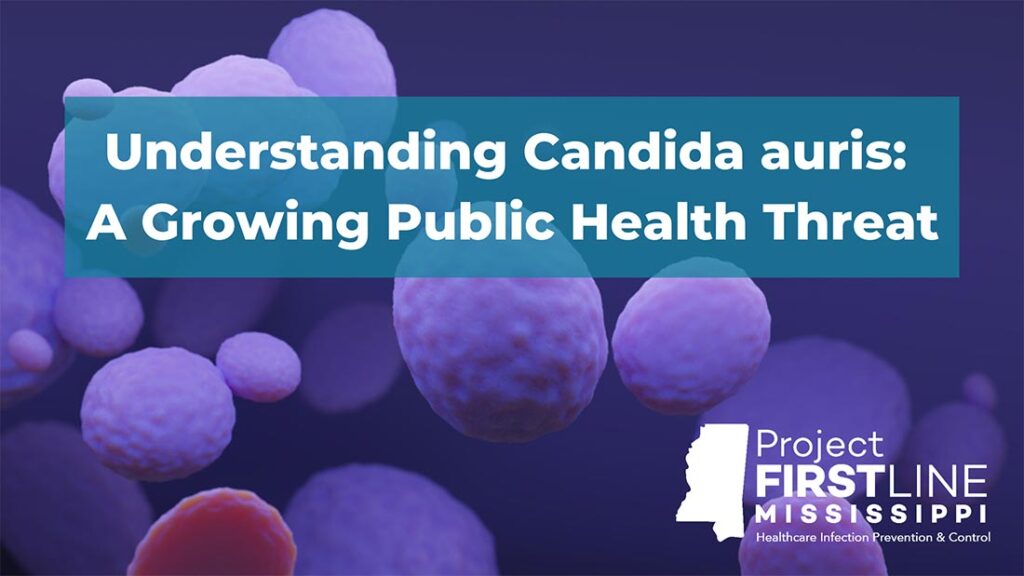
Understanding Candida auris: A Growing Public Health Threat
Candida auris (C. auris) is a type of yeast that poses significant challenges among patients in healthcare facilities. Known for causing severe and often fatal infections, C. auris is especially alarming because it can resist multiple antifungal drugs and can spread rapidly within healthcare settings. While C. auris presents considerable challenges, healthcare providers can employ several strategies to prevent its spread effectively.
The Rise of C. auris: A Cause for Concern
Since its initial discovery in Japan in 2009, C. auris has been found in over a dozen countries, making its first appearance in the U.S. in 2016. Since then, it has spread nationwide, with the CDC reporting a significant rise in U.S. cases from 2020 to 2021. In a 2023 report, CDC epidemiologist Dr. Meghan Lyman stated, “The rapid rise and geographic spread of cases is concerning and emphasizes the need for continued surveillance, expanded lab capacity, quicker diagnostic tests, and adherence to proven infection prevention and control.”
Why is C. auris a Public Health Threat?
- Multidrug Resistance: C. auris is resistant to multiple antifungal medications commonly used to treat fungal infections, with some strains resistant to all three major classes of antifungal treatments. This resistance severely limits treatment options and increases the risk of severe health outcomes.
- High Mortality Rate and Rapid Spread: Infections caused by C. auris can be severe and life-threatening, especially among patients in hospitals or long-term care facilities. C. auris can spread quickly within healthcare settings, exacerbating its impact on vulnerable populations. Some individuals may carry C. auris on their skin or in other areas of their body without exhibiting symptoms (a condition known as colonization), which can significantly facilitate its spread.
- Diagnostic Challenges: C. auris can be challenging to identify accurately with standard laboratory methods, leading to potential misdiagnosis and inappropriate treatment. Early and accurate detection is crucial for effective infection control and management.
How Does C. auris Spread?
C. auris can be spread through contact with contaminated surfaces, objects, and/or medical equipment in healthcare facilities. C. auris can persist on surfaces for a long time, potentially spreading to other patients and causing illness.
What are the Symptoms?
Identifying C. auris can be challenging due to symptom similarity with other bacterial and fungal infections. Symptoms of C. auris infections are nonspecific and depend on the location and severity of infection; therefore, there is no standard set of symptoms specific to C. auris infections. However, patients can be colonized with C. auris, without having symptoms.
Colonization (C. auris without symptoms)
Some patients can be colonized with C. auris, meaning C. auris can be detected in or on body sites without causing symptoms. Patients who are colonized can spread C. auris to others through contact with objects and surfaces around them including bedrails, doorknobs, and medical equipment. Colonized patients may later develop active infections, which can be severe.
Patients have been found to be colonized for a long time after active infection has resolved. The maximum length of time a person remains colonized with C. auris is not known. There are currently no efficacious strategies for C. auris decolonization and CDC does not recommend treatment for C. auris colonization.
Who is at Risk?
Certain patients are more susceptible to C. auris infections, including:
- Patients with severe underlying medical conditions
- Patients requiring complex medical care
- Patients with invasive medical devices such as:
- Breathing tubes
- Feeding tubes
- Catheters in a vein
- Urinary catheters
Preventing the Spread of C. auris in Healthcare Settings
In most instances, facilities equipped to care for patients with other multidrug-resistant organisms (MDROs) or Clostridioides difficile can also care for patients with C. auris. The primary infection control measures for prevention of C. auris transmission in healthcare settings are:
- Hand Hygiene: Staff and visitors should clean their hands before and after touching patients.
- Personal Protective Equipment: Wearing gloves, gowns and other protective gear when caring for a patient colonized or infected with C. auris.
- Regular Disinfection: Surfaces and equipment in the healthcare environment should be disinfected routinely (at least daily) with a product proven to be effective against C. auris. See EPA’s List P for a current list of EPA-approved products for C. auris.
- Facility Communication: Clear communication regarding a patient’s C. auris status and the implementation of appropriate infection control measures during transfers within or outside the facility are essential.
Conclusion
Candida auris spreads easily in healthcare settings and can cause outbreaks, representing a significant challenge in healthcare. Effectively preventing and controlling outbreaks requires a collaborative approach among healthcare providers and public health officials. Key infection control measures include adhering to hand hygiene, implementing appropriate precautions, and ensuring thorough cleaning and disinfection of the healthcare environment. For additional information and guidance on C. auris, please visit the CDC’s official website.
References
Lyman, M. et al. “Worsening Spread of Candida auris in the United States, 2019 to 2021.” Annals of internal medicine vol. 176,4 (2023): 489-495. doi:10.7326/M22-3469

